This is the first in a (very) occasional series, which (eventually) will also feature an Australian urban encounter with an osprey, and a meeting with a fox on a mountain in Japan.
With luck, this series will have more than three episodes!
Its geographic/climatic range is the widest of any Australian mammal, but many Australians have never seen an echidna in the wild.
Most who have seen one “close up” have only enjoyed one kind of view when anywhere near to an echidna – this kind:
Echidnas are very wary and have a very keen sense of smell.
My beloved and I have many times seen echidnas in the wild, in many different kinds of habitat.
However, on every previous occasion the echidna/s did what they usually do when aware of a human’s presence: “disappear, pronto”, or go “into defensive mode, pronto”, and stay that way – immobile, spines erect – until after the humans “disappear”.
(all photos copyright Doug Spencer, all taken within a single half hour. All depict the same individual, who also starred in the final image of the recent “Scratchings” post)
Late on the last morning of October 2018 we were not far from Apollo Bay, driving up Wild Dog Road, in Victoria’s lushly forested Otway Ranges.
The Otways’ temperate rainforests (and other forests, and farmland) are readily accessible from The Great Ocean Road, and Wild Dog Road is one Otways road you should take; as will be illustrated in Pelican Yoga‘s next Australian post.
This post’s hero or heroine was sighted by my beloved.
(unless you encounter a “train” of male echidnas in thrall to a female, you generally encounter one echidna, only. Would-be mating behaviour aside, echidnas are solitary, and an individual’s gender is not apparent to a human observer)
I stopped the car, and we then identified the blob as unmistakably Tachyglossus aculeatus – the short-beaked echidna, Australia’s one living species of echidna.
Echidnas and platypuses are the only monotremes – the world’s only egg-laying mammals.
Click here for more information on echidnas.
In all probability, what we could see at 11.09 that morning was all we were going to see of this echidna.
However, we were downwind of this echidna, there was a deep ditch immediately below the echidna, and a steep slope rose behind him/her…and I am an optimist.
I suggested we stay…and stay quiet and still…the echidna just might figure that we were not a threat, given that we would not be able to navigate the deep ditch and steep slope.
Bingo!
Ten minutes later, I was able to take the photo atop this post, then – a few seconds later – the aforementioned/previously-published “scratching” image.
A few seconds after the scratch, the echidna navigated the ditch, headed up the slope and resumed normal life, in search of ants, termites, worms or insect larvae.
I love the way an echidna’s shape and apparent size can change so radically, according to whatever is its current activity. (this is also true of many birds)

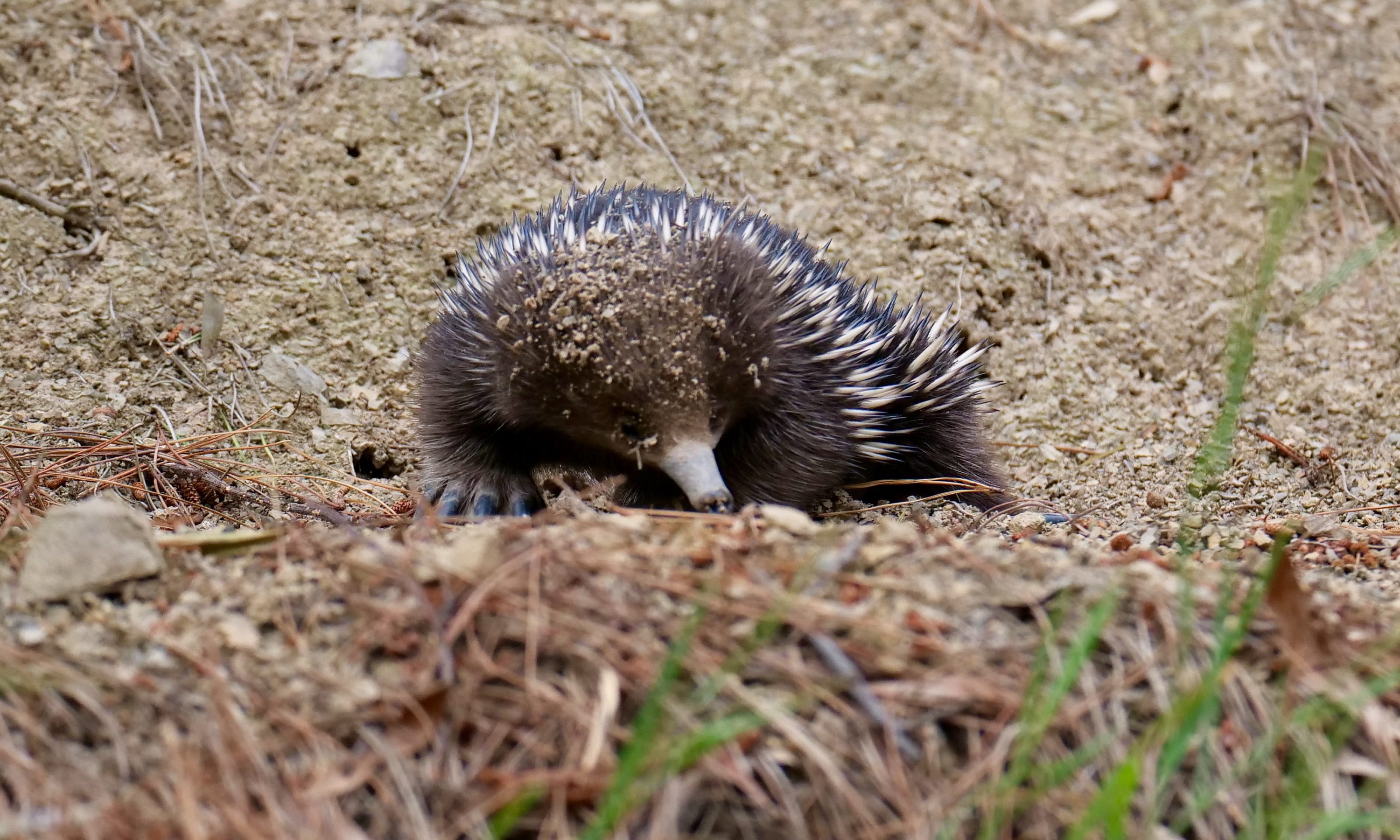
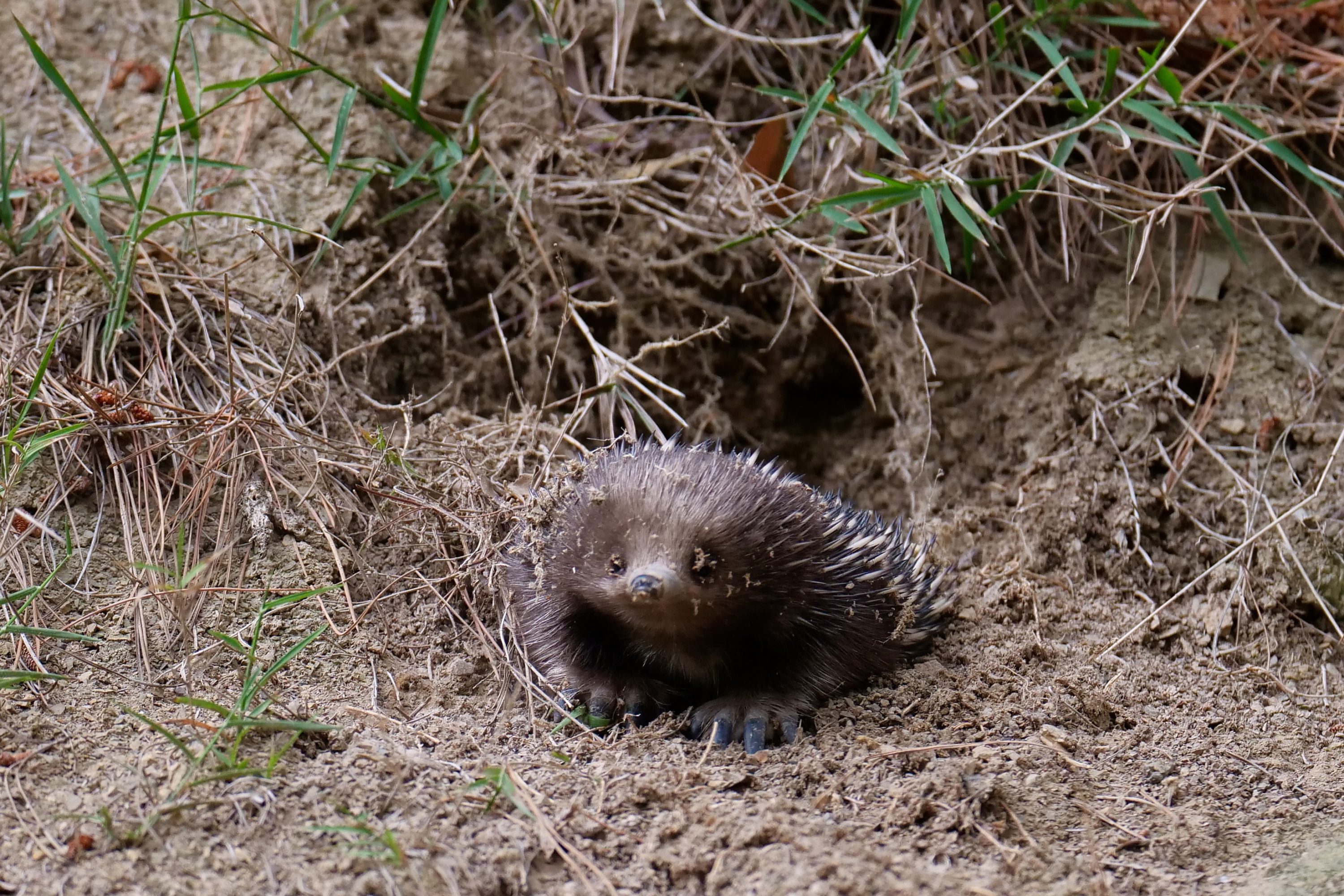


subscribe